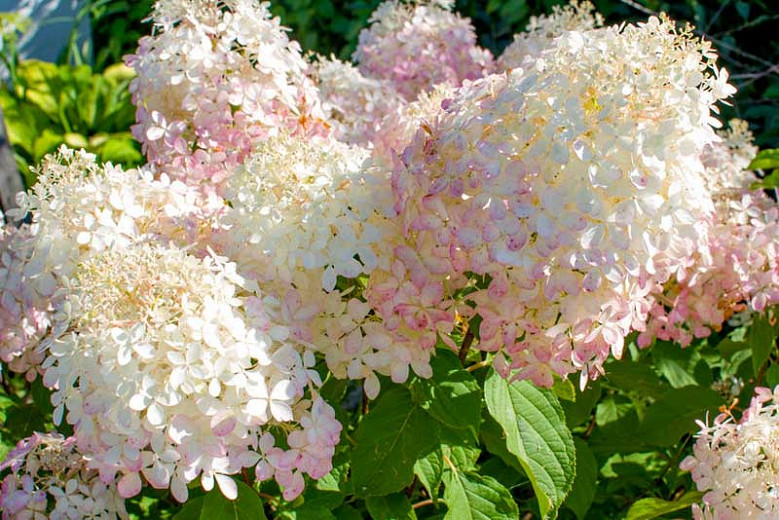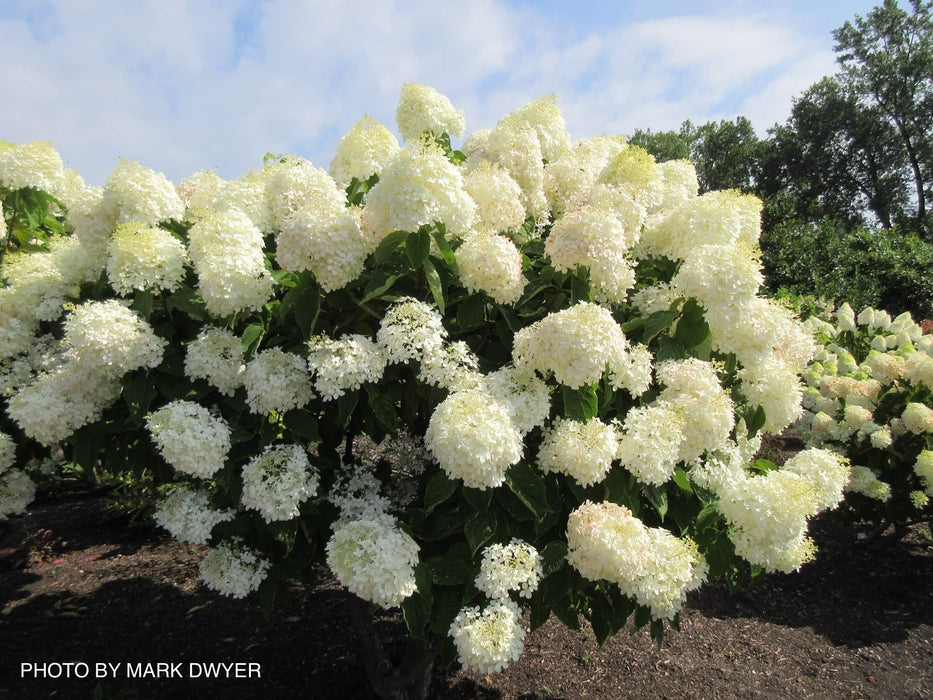Phantom Panicle Hydrangea: The Mysterious Flower That Changes Color
Phantom Panicle Hydrangea: The Mysterious Flower That Changes Color
The phantom panicle hydrangea is a beautiful and mysterious flower that changes color throughout the season. It starts out white with a green tint in July, then turns pink as it matures, and finally fades to a pale lavender in the fall. This color change is caused by the pH of the soil, with more acidic soil resulting in darker pink flowers.
Phantom panicle hydrangeas are native to Japan and Korea, and they are a popular choice for gardens in temperate climates. They are relatively easy to care for, and they can grow up to 6 feet tall. The flowers are large and showy, and they make a great addition to any garden.
In addition to their beauty, phantom panicle hydrangeas also have some interesting folklore associated with them. In Japanese culture, they are said to represent the souls of the dead, and they are often planted in cemeteries. In Korea, they are said to bring good luck and prosperity.
Whether you believe in the folklore or not, there is no denying that phantom panicle hydrangeas are beautiful and mysterious flowers. If you are looking for a unique and eye-catching plant for your garden, then a phantom panicle hydrangea is a great choice.
Main Content
History and Origin
The phantom panicle hydrangea (Hydrangea paniculata 'Phantom') is a relatively new cultivar, first introduced in 1999. It is a hybrid of two other hydrangeas, Hydrangea paniculata 'Grandiflora' and Hydrangea paniculata 'Tardiva'.
The phantom panicle hydrangea is native to Japan and Korea, where it has been cultivated for centuries. In Japanese culture, it is said to represent the souls of the dead, and it is often planted in cemeteries. In Korea, it is said to bring good luck and prosperity.
Planting and Care
Phantom panicle hydrangeas are relatively easy to care for. They prefer full sun or partial shade, and they need well-drained soil. They are not very drought-tolerant, so they should be watered regularly during the summer months.
Phantom panicle hydrangeas can be pruned in the spring or fall. If you want to encourage large flower heads, you should prune the plant back to about 12 inches in the spring.
Flower Color
The flower color of phantom panicle hydrangeas is determined by the pH of the soil. In acidic soil, the flowers will be a deep pink. In neutral soil, the flowers will be a pale pink or lavender. In alkaline soil, the flowers will be white.
You can change the pH of the soil by adding sulfur or aluminum sulfate. If you want to have deep pink flowers, you should add sulfur to the soil. If you want to have pale pink or lavender flowers, you should add aluminum sulfate to the soil.
Pests and Diseases
Phantom panicle hydrangeas are relatively resistant to pests and diseases. However, they can be susceptible to aphids, spider mites, and powdery mildew. If you notice any pests or diseases on your plant, you should treat them immediately.
Propagation
Phantom panicle hydrangeas can be propagated by division or by cuttings. If you want to propagate by division, you should divide the plant in the spring or fall. If you want to propagate by cuttings, you should take cuttings in the spring or summer.
Conclusion
Phantom panicle hydrangeas are beautiful and mysterious flowers that are relatively easy to care for. They are a great choice for gardens in temperate climates, and they can be enjoyed for their changing flower color throughout the season.
If you're looking for a hydrangea that's truly unique, look no further than the phantom panicle hydrangea. This stunning flower is known for its delicate, ghostly blooms that change color throughout the season. In the spring, the flowers start out a soft pink, then gradually fade to white as summer progresses. In the fall, they turn a fiery red or orange.
The phantom panicle hydrangea is a relatively new variety, so it's not yet as widely available as some other hydrangeas. However, it's becoming increasingly popular, and for good reason. These flowers are simply stunning, and they're sure to add a touch of magic to any garden.
If you're interested in learning more about the phantom panicle hydrangea, I recommend visiting . This website has a wealth of information about this amazing flower, including planting instructions, care tips, and photos of the flowers in all their glory.
Image of phantom panicle hydrangea
5 different images of "phantom panicle hydrangea" from Pinterest:
- Image 1: A full-grown phantom panicle hydrangea in full bloom. The flowers are a creamy white color with a hint of pink.

- Image 2: A close-up of the flowers of a phantom panicle hydrangea. The flowers are large and conical, with a mixture of sterile and fertile blooms.

- Image 3: A phantom panicle hydrangea in the fall. The flowers have turned a soft pink color.

- Image 4: A phantom panicle hydrangea in the winter. The flowers have fallen off, but the bare branches are still attractive.

- Image 5: A phantom panicle hydrangea in a garden setting. The hydrangea is surrounded by other flowers and plants, creating a beautiful display.

Post a Comment for "Phantom Panicle Hydrangea: The Mysterious Flower That Changes Color"